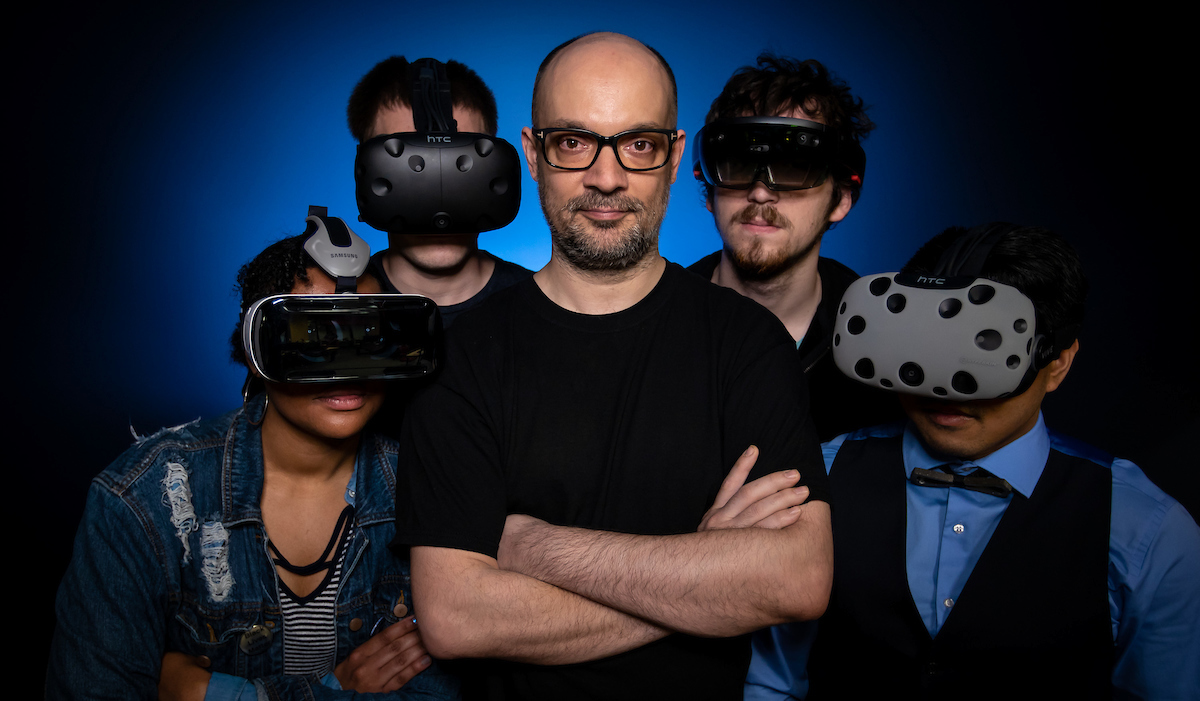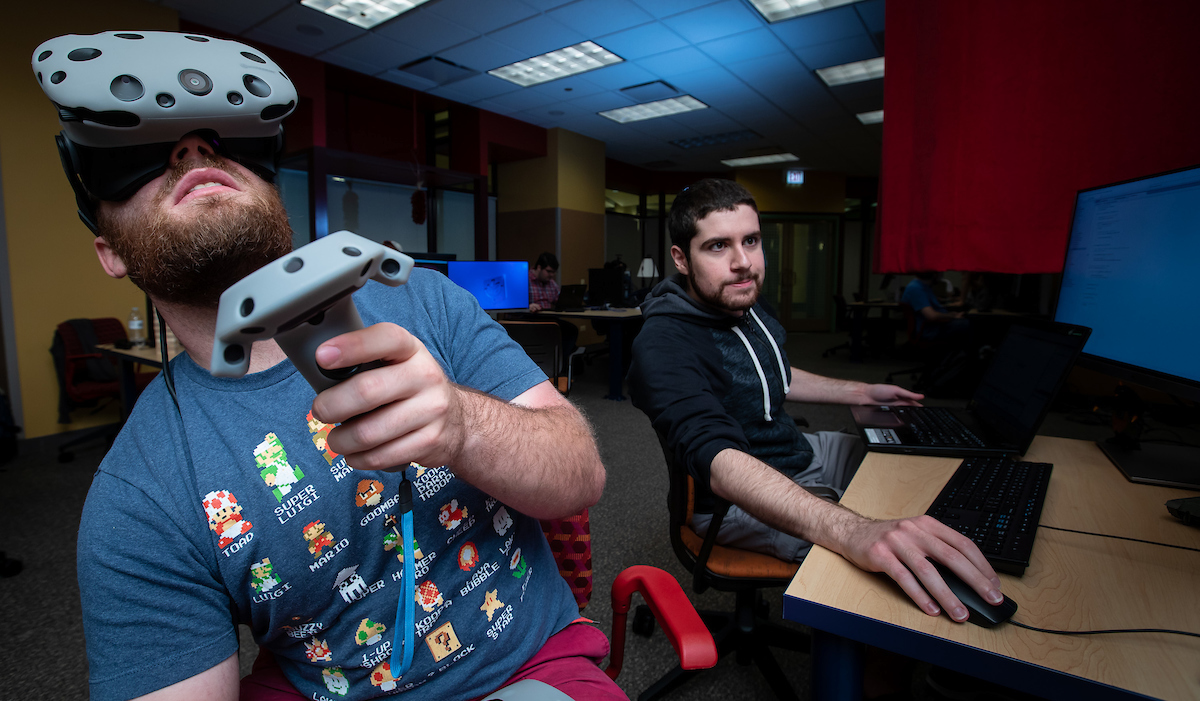 Brian Schrank, associate professor of game development, theory and design, is surrounded by students wearing virtual reality headsets in the new Virtual and Augmented Design Lab, located in the concourse of the DePaul Center. (DePaul University/Jeff Carrion)
Brian Schrank, associate professor of game development, theory and design, is surrounded by students wearing virtual reality headsets in the new Virtual and Augmented Design Lab, located in the concourse of the DePaul Center. (DePaul University/Jeff Carrion)
The renovated classroom in the DePaul Center looks typical enough, with students huddled around computers and notes filling dry erase boards. But like the students' projects themselves, the room holds more than meets the eye. It's the new home to students and faculty who are designing the next wave of virtual and augmented reality toys and games.
DePaul's Virtual and Augmented Design Lab opened earlier this month on the Concourse Level of the DePaul Center, providing a dedicated area for College of Computing and Digital Media faculty and students to collaborate on virtual and augmented reality toys and games. The lab is equipped with Microsoft HoloLenses, augmented reality headset/visors; HTC Vives, virtual reality headsets with hand and foot trackers; Oculus Rifts, virtual reality headsets with hand trackers; iPhones for augmented reality development; and Macs and personal computers for development.
Brian Schrank, an associate professor of game development, theory and design, leads the lab.
"The Virtual and Augmented Design Lab gives students a space where they can work uninterrupted, after class and on Saturdays, to finely hone their projects," Schrank says. "The lab also builds community. It makes it easier for students to get to know and learn from each other."
In augmented reality, or AR, a person looks at her or his environment through a screen, such as a smartphone, and sees virtual objects overlaid on the real-world space. AR hit the mainstream with the popular game Pokémon GO, in which people, through smartphones, collect virtual creatures by searching for them in public spaces. Schrank's students are developing a multiplayer augmented reality toy where people interact with virtual cats, feeding and petting them and seeing them grow.
With virtual reality, or VR, people typically wear a headset and experience a different world. For example, Schrank's students are developing a game called Fight Cloud, where people look at their bodies through a VR headset and see they have become a cloud; when the person swings his or her arms, the cloud can engage in battle with bubblegum monsters and flying crystal bats.
The projects intentionally focus on fun and playfulness.
"New mediums of art and communication go through a period where there's a gap in how accessible the material is to a broad audience," Schrank says. "Our students are developing toys and games that make virtual and augmented reality appealing to anyone."
Students using the lab are participating in a growing industry. The International Data Corporation estimates that total spending on augmented and virtual reality products and services will top $215 billion in 2021, a 113 percent increase from a year ago. Tech giants Apple, Google and Facebook are leading the industry with significant investments in tools, platforms and services. Developers are finding new applications for the technology in medicine, communication, game design and training.
CDM meets industry needs by rapidly developing special topics courses for students that explore new technology soon after it hits the market. Its game design program helped CDM earn distinction from the Princeton Review, which named the college to its "Top 50 Undergraduate Schools to Study Game Design for 2018" and "Top 25 Graduate Schools to Study Game Design for 2018." The undergraduate program placed 28th this year. The graduate program ranked 17th.
Animation Career Review ranked the undergraduate game design program 7th.
Next academic year, the Virtual and Augmented Design Lab will continue to host CDM courses that include elements of virtual and augmented game design and development. In the future, Schrank would like to create sets of courses that would attract students hoping to become filmmakers, graphic designers, web developers, animators or game developers.
 Students Alec Scott, left, and Justin Halter collaborate during their class Topics in Game Design in the College of Computing and Digital Media's new Virtual and Augmented Design Lab. (DePaul University/Jeff Carrion)
Students Alec Scott, left, and Justin Halter collaborate during their class Topics in Game Design in the College of Computing and Digital Media's new Virtual and Augmented Design Lab. (DePaul University/Jeff Carrion)